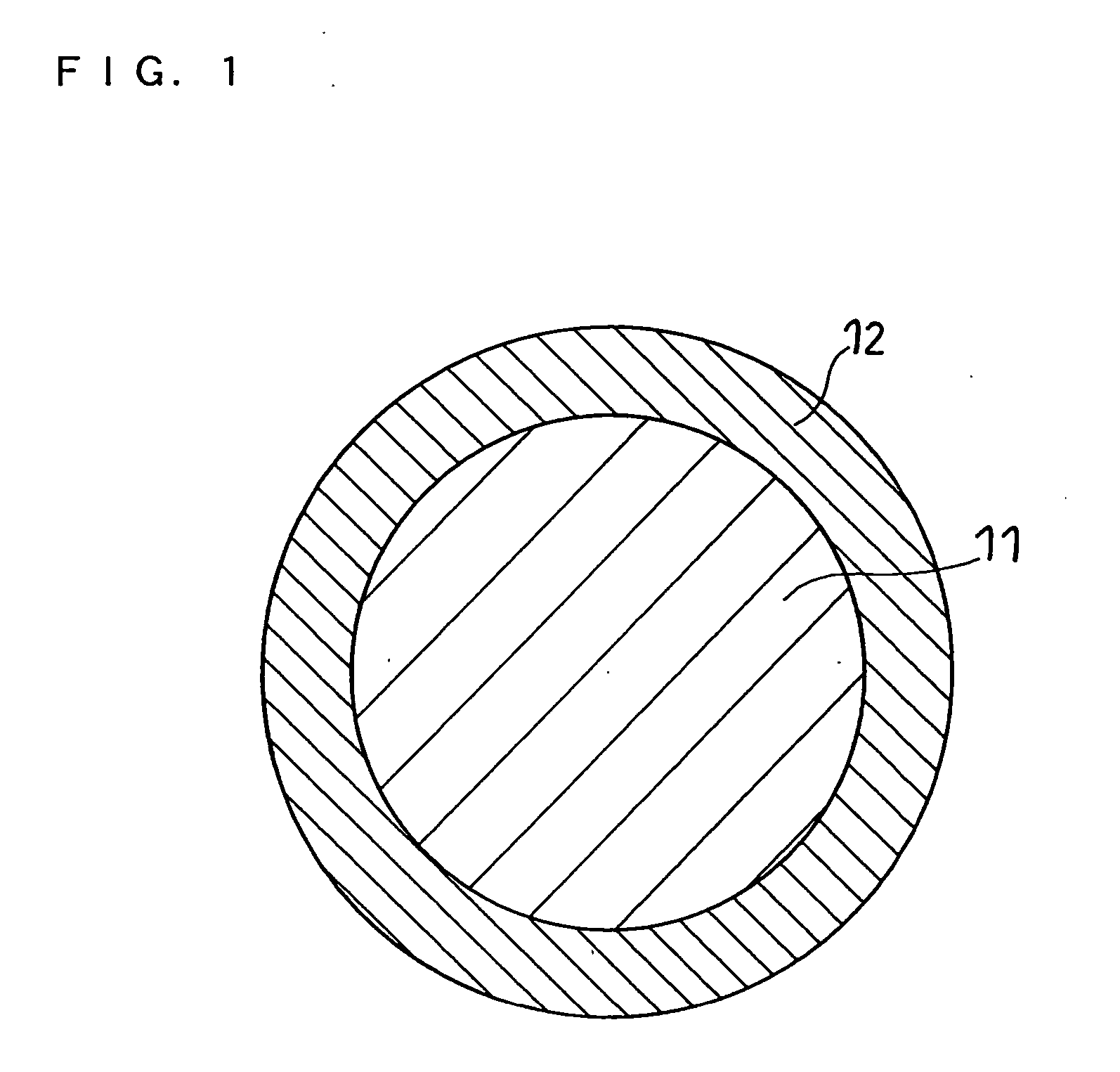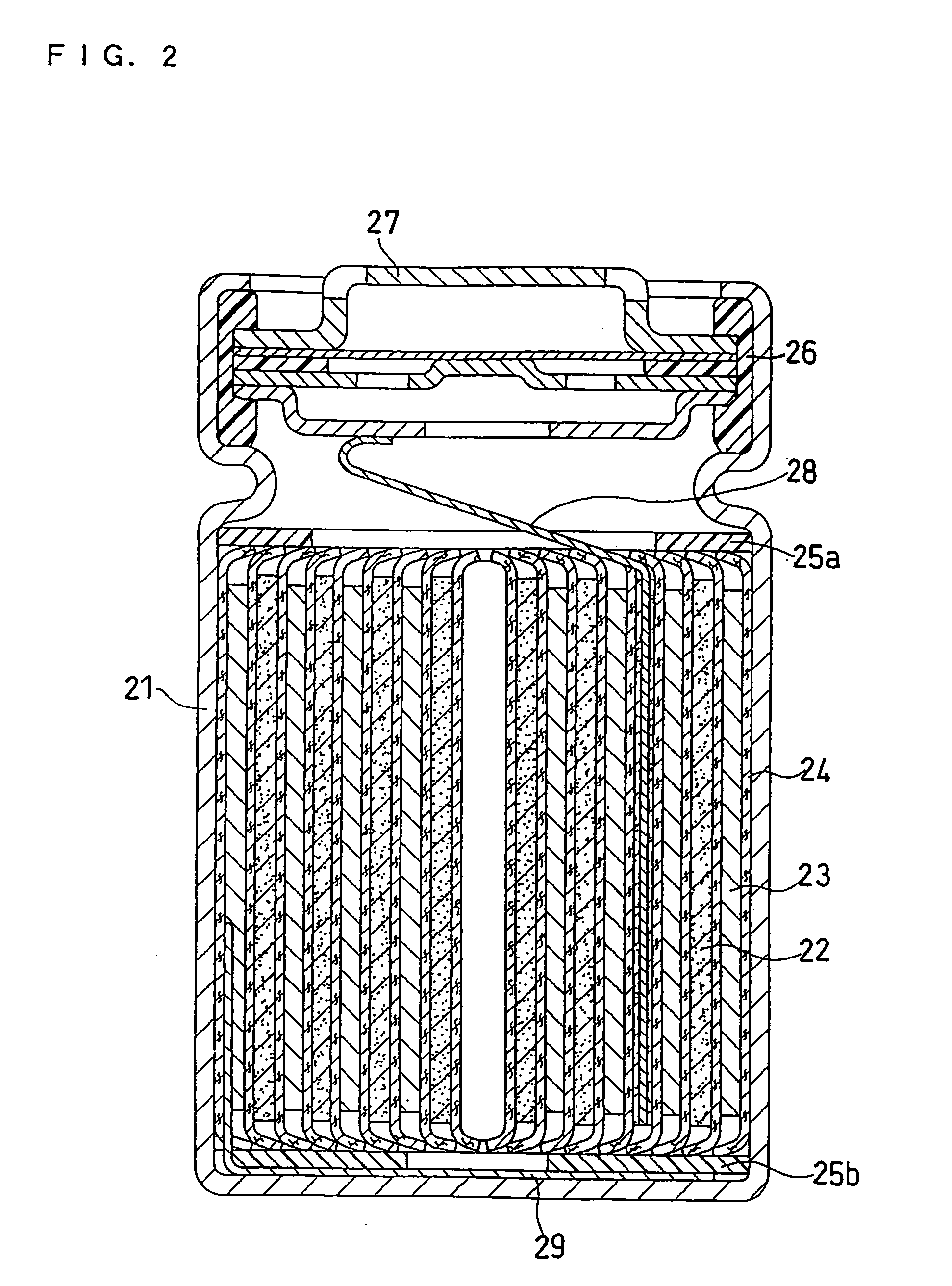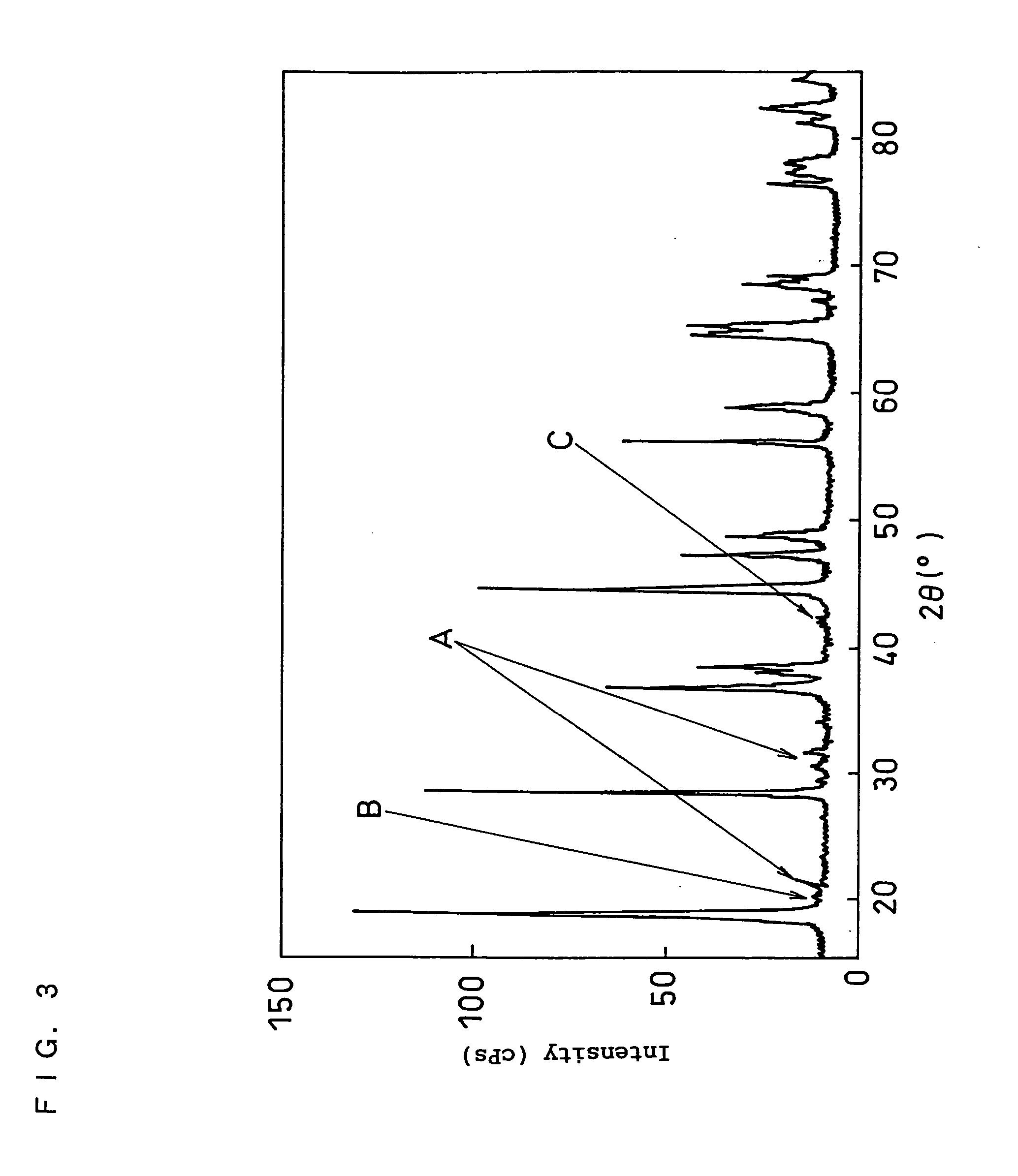Positive electrode active material for non-aqueous electrolyte secondary battery, production method thereof, and non-aqueous electrolyte secondary battery using the same
a technology of non-aqueous electrolyte and active material, which is applied in the direction of cell components, electrochemical generators, and nickel compounds, etc., can solve the problems of material, material, unlikely to form, and lithium dendrites,
- Summary
- Abstract
- Description
- Claims
- Application Information
AI Technical Summary
Benefits of technology
Problems solved by technology
Method used
Image
Examples
example 1
(Battery A)
[0069] In this example, a cylindrical non-aqueous electrolyte secondary battery as illustrated in FIG. 2 was produced. The non-aqueous electrolyte secondary battery of FIG. 2 includes a stainless steel case 21 and an electrode plate group accommodated in the case 21. The electrode plate group is formed of a positive electrode 22, a negative electrode 23, and a polyethylene separator 24, and the positive electrode 22 and the negative electrode 23 are spirally rolled up with the separator 24 interposed therebetween. The upper and lower parts of the electrode plate group are fitted with an upper insulator plate 25a and a lower insulator plate 25b, respectively. The opening of the case 21 is sealed by crimping the opening edge of the case 21 onto an assembled sealing plate 27, with a gasket 26 fitted therebetween. Also, one end of an aluminum positive electrode lead 28a is attached to the positive electrode 22, and the other end of the positive electrode lead 28 is connecte...
example 2
[0111] This example examined cases where the contents of Co and Al in the lithium nickel composite oxide of Example 1 were varied.
(Battery I)
[0112] A nickel composite hydroxide represented by Ni0.87Co0.1Al0.03(OH)2 and lithium hydroxide monohydrate (LiOH.H2O) were mixed such that Li:Ni:Co:Al=1.08:0.87:0.1:0.03 (molar ratio), to obtain a mixture. A non-aqueous electrolyte secondary battery was produced in the same manner as the battery A except for the use of this mixture. This battery was named battery I. The lithium nickel composite oxide used is represented by Li1.08Ni0.87Co0.1Al0.03O2
(Battery J)
[0113] A nickel composite hydroxide represented by N0.62Co0.35Al0.03(OH)2 and lithium hydroxide monohydrate (LiOH.H2O) were mixed such that Li:Ni:Co:Al=1.08:0.62:0.35:0.03 (molar ratio), to obtain a mixture. A non-aqueous electrolyte secondary battery was produced in the same manner as the battery A except for the use of this mixture. This battery was named battery J. The lithium nic...
example 3
[0119] This example examined cases where the metal element M of the lithium nickel composite oxide was an element other than aluminum.
(Battery M)
[0120] A nickel composite hydroxide represented by Ni0.34CO0.33Mn0.33(OH)2 and lithium hydroxide monohydrate (LiOH.H2O) were mixed such that Li:Ni:Co:Mn=1.08:0.34:0.33:0.33 (molar ratio), to obtain a mixture. A non-aqueous electrolyte secondary battery was produced in the same manner as the battery A except for the use of this mixture. This battery was named battery M. The lithium nickel composite oxide used is represented by Li1.08Ni0.34CO0.33Mn0.33O2.
(Battery N)
[0121] A nickel composite hydroxide represented by Ni0.77CO0.2Ti0.03(OH)2 and lithium hydroxide monohydrate (LiOH.H2O) were mixed such that Li:Ni:Co:Ti=1.08:0.77:0.2:0.03 (molar ratio), to obtain a mixture. A non-aqueous electrolyte secondary battery was produced in the same manner as the battery A except for the use of this mixture. This battery was named battery N. The lith...
PUM
 Login to View More
Login to View More Abstract
Description
Claims
Application Information
 Login to View More
Login to View More - R&D
- Intellectual Property
- Life Sciences
- Materials
- Tech Scout
- Unparalleled Data Quality
- Higher Quality Content
- 60% Fewer Hallucinations
Browse by: Latest US Patents, China's latest patents, Technical Efficacy Thesaurus, Application Domain, Technology Topic, Popular Technical Reports.
© 2025 PatSnap. All rights reserved.Legal|Privacy policy|Modern Slavery Act Transparency Statement|Sitemap|About US| Contact US: help@patsnap.com



